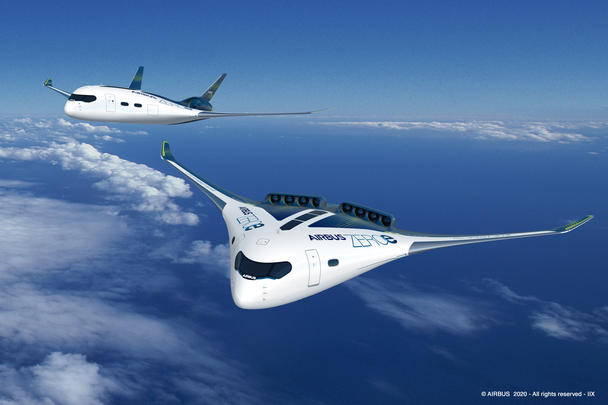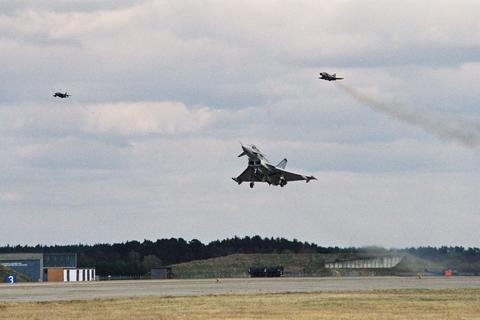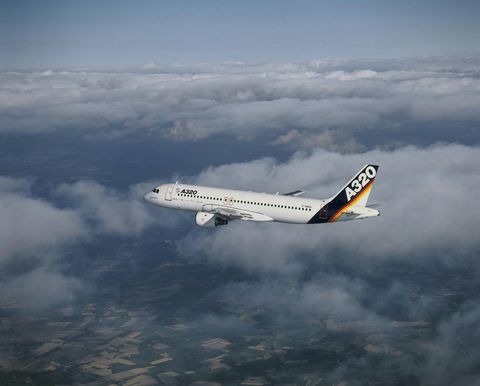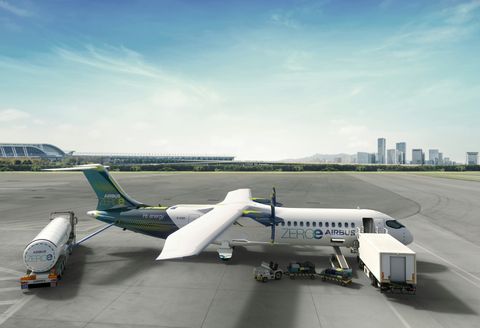Aerodynamics and the art of aircraft design
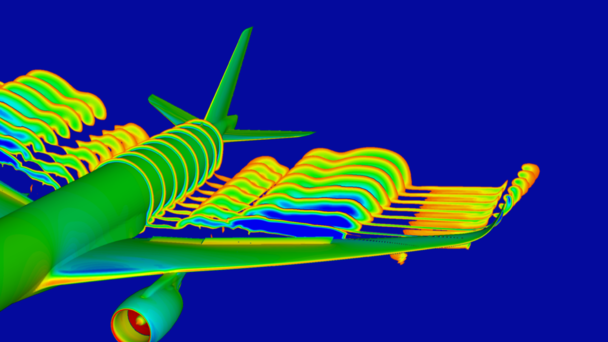
Aviation’s decarbonisation relies on a mixture of incremental steps and outright technological breakthroughs. To succeed, both approaches need to exist inside a collaborative ecosystem. In this spirit Airbus, DLR and ONERA, two leading European research institutions, are exploring how high-performance computing can improve our understanding of the relationship between aerodynamics and aircraft efficiency.
Computational fluid dynamics (CFD) combines applied mathematics, physics and high-performance computing. It’s used to understand how air moves over complex shapes, helping designers maximise lift and minimise drag to make an aircraft as efficient as possible at both low and high speeds.
“I always say that CFD is where science meets art. It’s a beautiful thing, a kind of computerised wind tunnel,” grins Airbus’ Head of Aerodynamics Simon Galpin. Galpin oversees a five-year-old partnership with French aerospace lab ONERA (Office National d'Etudes et de Recherches Aérospatiales) and the German Aerospace Center DLR (Deutsches Zentrum für Luft- und Raumfahrt) on behalf of Airbus.
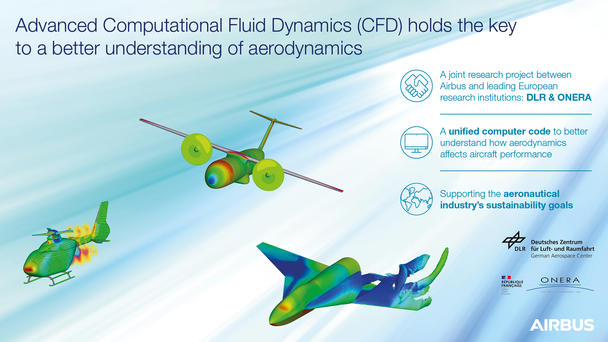
“Experts at our fingertips”
DLR and ONERA are decades-long Airbus allies. Historically each had worked on separate computer codes, the foundations on which CFD is built. Although the codes were effective in their own right, communication between the different development teams was limited.
Gradually it became clear that the codes required collective re-engineering for extreme-scale parallel computing platforms. The partnership addresses that shortfall. “It made sense to combine our efforts,” says Galpin. “We’re developing a new generation CFD code that is ‘industry-ready’ for flow prediction and equally applicable to aircraft, helicopters and space systems.”
The signing of the agreement in 2017 was big news in an area that demands substantial time, resources and investment. “From one day to the next the workforce doubled!” remembers ONERA’s Aeronautics Director Philippe Beaumier. “We had a team of experts on both sides of the Rhine at our fingertips.”
The partners renewed their commitment in late 2022, with the goal of extending the code to current and future Airbus projects, such as ZEROe, EcoPulse and Open Fan research. In fact, it’s already being used to mature test cases previously thought unfeasible because of limited physical representation and computational capacity. Soon those cases could influence propulsion, engine integration and wing technology choices that will determine the blueprints for a new generation of fuel-efficient aircraft.
“We want to improve the predictability of performance right from the design phase,” says DLR’s Dr Markus Fischer, Division Board Member for Aeronautics. “The new code can also help specialists investigate even more radical design concepts, such as the flying wing, with a degree of speed and accuracy that wasn’t within the grasp of previous software.”
I always say that CFD is where science meets art. It’s a beautiful thing, a kind of computerised wind tunnel.” Simon Galpin, Airbus Head of Aerodynamics
Every gram of energy counts
Fischer argues that without unfettered digitalisation to accelerate the pace of innovation, decoupling air traffic growth from emissions can’t be guaranteed. DLR shares Airbus’ and ONERA’s ultimate vision of clean aerospace aviation, which he says will require a disruptive approach. “Decarbonisation calls for a twin revolution,” agrees Beaumier, “one technological and one methodological. Aircraft development cycles need to be halved to realise those ambitions. This is where mature numerical simulation plays a major role.”
How does CFD contribute to this vision of clean aerospace? Galpin answers by pointing out that kerosene substitutes are likely to be more costly. “We better be extracting every gram of energy from every kilogram of alternative fuel, using the most efficient aircraft architecture. Using advanced CFD helps us shave off drag little by little.”
Attracting future engineers
Airbus has access to some of the highest-performing extreme-scale computational systems in the world to help develop and validate the code, helping boost engineers’ confidence in their predictions. It’s an inspiring and rewarding exercise, Beaumier insists, with a real-world application: “To directly support the aeronautical industry’s sustainability goals.”
The final word goes to Pascal Larrieu, Airbus Computational Simulation Expert and the company’s lead for developing the new flow solver: “This project opens doors to a diverse, dynamic and Europe-wide research network. We’re convinced our work will help attract future aeronautics engineers to join us in meeting our decarbonisation ambition together.”
